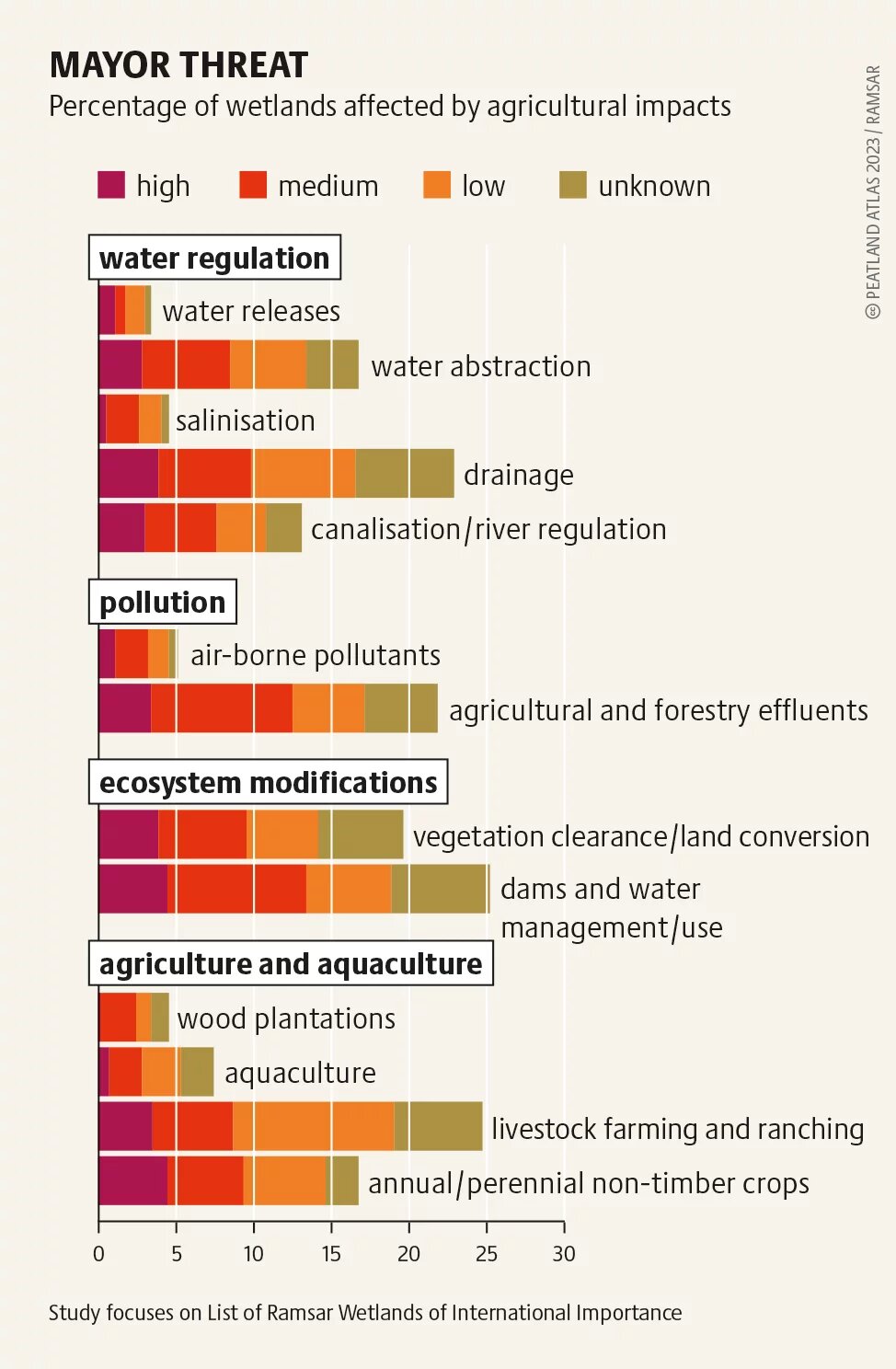
Some of the world’s most important and most recently recognized peatlands can be found on the African continent. They are home to unique and rare flora and fauna – and threatened by the oil companies’ greed for money.

Peatlands cover nearly 40 million hectares across Africa. The largest area, in the Congo Basin, stores around 30 billion tonnes of carbon, while the Nile Basin – where nearly more than half of all the peatlands are now drained – has another 10 billion tonnes. Africa’s peatlands are renowned for their unique biodiversity. The South African palmiet wetlands are dominated by the endemic palmiet, a semi-aquatic shrub which provides a home for many rare and valuable species. The Bale mountains in Ethiopia, dominated by cushion plants unique to the Afroalpine zone, are home to more than half the global population of the Ethiopian wolf, the rarest canid in the world.
In the centre of the continent – in the heart of the Congo Basin Forest, the second largest tropical forest after the Amazon – lies the Cuvette Centrale peatland complex. It is shared by the Democratic Republic of Congo (DRC) and the Congo. Covering 16.7 million hectares, it is one of the largest contiguous peatland complexes in the world. The Cuvette Centrale is a major carbon store, a very unique and invaluable ecosystem, a biodiversity hotspot and a lifeline for local communities. It accounts for more than a third of the world’s tropical peatlands and contains more than a quarter of the carbon stored in such areas. This makes it very essential for mitigating climate crisis.
Most of the peatlands in the Cuvette Centrale occur near rivers, in large basins between rivers, or under rare, palm-dominated swamp forests that cover old river channels. The area boasts an astonishing array of biodiversity: a rich tapestry of species, many of which are unique, such as forest elephants, western lowland gorillas and Allen’s swamp monkeys. The diverse habitats of the peatlands, ranging from open marshes and swamps to open water channels and forested islands, contribute to the stability and resilience of the biodiversity throughout the region. At 6.5 million hectares, the Tumba-Ngiri-Maindombe wetlands, the world’s largest Ramsar wetland site of international importance, overlap with the Cuvette Centrale.
The vast wetland ecosystem of the Cuvette Centrale plays a vital role in water regulation, maintaining local water sources, regulating floods and droughts, and supporting agricultural activities. Communities in and around the peatlands depend on these water resources. Indigenous communities have lived in the region for generations and have deep-rooted cultural ties to the land. They fish, hunt and gather medicinal plants in the peatlands.
Despite its immense value, the Cuvette Centrale faces several threats. Expanding agricultural activities, oil and logging concessions, and infrastructure development pose significant risks to this fragile ecosystem. In November 2021, the government of the Democratic Republic of Congo signed a 10-year agreement to protect the Congo Basin forest, including its peatlands. But just a few months later, it announced its intention to auction off concessions for 27 oil and 3 gas exploration blocks. Several of the blocks overlap with the Cuvette Centrale peatlands. The results of the auction are expected in March 2024. In the meantime, a civil society-led campaign is trying to persuade oil companies not to bid for the concessions and is pressuring the government not to proceed with the auction.
Despite the importance of the Cuvette Centrale, binding national regulations for peatland protection are not in place. A key factor protecting the peatlands is current inaccessibility. If the oil auction is successful, oil companies will enter the deep forest and open up roads to allow exploration and access. This will also allow other forms of exploitation, such as logging, which will accelerate degradation.
International cooperation, such as the Central African Forest Initiative, research projects and partnerships with local communities are essential to the conservation of the Cuvette Centrale peatlands. Conservation efforts should focus on establishing protected areas, implementing sustainable management practices and monitoring conservation efforts. Sustainable land-use practices must be prioritized in partnership with indigenous communities, and awareness of the importance of peatland conservation for biodiversity and climate stability must immediately be raised.



